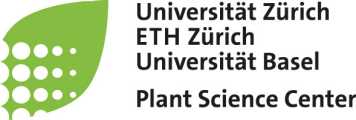DIVERSGRASS
Values of species diversity in grassland production – An ecological economic assessment (DIVERSGRASS)
Background:
Grasslands are crucial for global food security, cover the majority of the world’s agricultural area and provide – besides feed production – many additional ecosystem services. Previous research has identified positive and stabilizing effects of species diversity (SD) on grassland production, e.g. on biomass yields. A key challenge is to transform these findings also into economic terms, i.e., to quantify these potential benefits of SD in terms of farmers’ utility and investigate how these effects of SD affect farmers’ behavior. Here, a strong integration of both ecology and agricultural economics is required, although neglected so far.
Objectives:
In this project, we develop a novel, interdisciplinary ecological-economic framework to investigate these effects. This framework is used to i) investigate and economically assess SD effects on quantity (total biomass) but also on quality (fodder values) components of grassland yields, ii) focus on the interdependencies between the intensity of grassland use, SD, climatic risks (focus on drought) and the special role of climatic extremes, and iii) to assess interdependencies between insurance mechanisms and agricultural policies and SD. Three different rich experimental datasets (covering intensive and extensive grassland systems; long-term drought experiment) are used for econometric analyses, which are inputs for economic assessments based on the here developed ecological-economic framework. Our project is characterized by a strong interdisciplinary set-up, and is directly linked to current discussion and projects in practice and policy. A strong emphasis on stakeholder interaction and dissemination of results thus creates immediate value added for farmers, agricultural schools, extension services and policy makers.
Involved Groups:
Agricultural Economics and Policy Group and Grassland Sciences Group at ETH Zurich.
Publications:
Schaub & Finger (2020) Drought effects on hay and feed grain prices. Environmental Research Letters. external page>>call_made
Schaub, S., Buchmann, N., Lüscher, A., & Finger, R. (2020). Economic benefits from plant species diversity in intensively managed grasslands. Ecological Economics, 168, 106488. external page>>call_made
Schaub, S., Finger, R., Leiber, F., Probst, S., Kreuzer, M., Weigelt, A., Buchmann, N. & Scherer-Lorenzen, M. (2020). Plant diversity effects on forage quality, yield and revenues of semi-natural grasslands. Nature Communications 11, 768. external page>>call_made
Schaub, S. , Finger, R., Buchmann, N., Steiner, V., Klaus, V. (2021). The costs of diversity: higher prices for more diverse grassland seed mixtures. Environmental Research Letters 16 094011 external page>>call_made
Reply to:“Results from a biodiversity experiment fail to represent economic performance of semi-natural grasslands”. Nature communications, 12(1), 1-3.external page>>call_made
Contact:
Prof. Robert Finger (), Sergei Schaub (), Prof. Nina Buchmann ()
Blog Contributions:
Schaub & Finger (2020) external pageWie wirkt sich Dürre auf Futterpreise aus?call_made
Schaub et al. (2020) external pageDer ökonomische Mehrwert von Diversität im intensiven Graslandcall_made
Schaub & Finger (2017) external pageIst Diversität im Grasland ökonomisch wertvoll?call_made
Schaub et al. (2021) external pageDer Preis der Biodiversitätcall_made
Sergei Schaub (2020) external pageEine ökonomische Betrachtung von Grasland, Biodiversität und Wetterextremencall_made
Funding Period: 2016-2020
Funding:
Zurich-Basel Plant Science Center -Mercator Fellowship Program - Bridging Plant Science and Society


